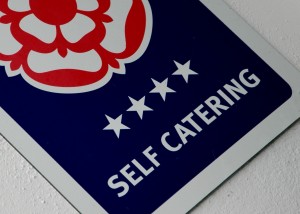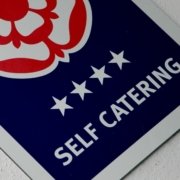Holiday cottage signage: Do you require planning permission?
Last Updated on October 28, 2015 by admin
 Many holiday homeowners will proudly display their award wins and certifications on entry to, or outside their property. If your accommodation is of a high quality it’s only right that you’ll want people to know, and tasteful positioning of holiday cottage signage is an obvious way of communicating this to visiting guests and passing trade.
Many holiday homeowners will proudly display their award wins and certifications on entry to, or outside their property. If your accommodation is of a high quality it’s only right that you’ll want people to know, and tasteful positioning of holiday cottage signage is an obvious way of communicating this to visiting guests and passing trade.
If you display any outdoor signs or advertisements there are two regulations you need to comply with:
- The Town and Country Planning (Control of Advertisements) Regulations 2007
- The Consumer Protection Regulations 2008 (CPRs) relating to unfair trading and misleading marketing.
Broadly speaking, the first of these deals with planning permission and the second ensures that your signage is accurate and not misleading to potential guests.
We take a closer look at how you can make sure you stay on the right side of the relevant regulations…
Signs on your holiday home or cottage complex – do you need planning permission?
The need for planning permission for signage on your holiday home can be broken down into three categories:
Fully illuminated signs: If you want to add a sign that is illuminated it will always require express consent from your Local Planning Authority (LPA). The only exception to this would be if the sign were to be placed inside a window, rather than a doorway or exterior wall.
Partially illuminated signs: If only the letters of your sign are illuminated you may not require express planning permission and it is worth contacting your LPA to check on this.
Non-illuminated signs: These can usually be displayed with deemed planning consent, which is when the permission is deemed to have already been given by the planning authority through their rules and regulations, and there is no need to apply for it.
Listed Buildings
If your holiday home is a listed building you will need to seek planning permission before adding any signage, or making alterations to any existing signage that has already gained planning permission.
How about signage at the entrance to your holiday home or cottage complex?
Many of your guests will be visiting your holiday home for the first time so it’s a sensible idea to have to have signage to make sure they know they’ve arrived in the right place. You will normally be allowed to erect a non-illuminated sign by your gate, driveway or within the grounds of your holiday home with deemed consent (subject to limitations on overall size, height and size of characters or symbols).
Directional signs away from your holiday home
For those situated off the beaten track, you may consider placing directional signs at the end of the road, lane, or wherever guests trying to find your holiday home commonly come unstuck.
If you’re looking at placing signs of this sort away from your holiday home they will always require planning permission.
Please note that planning is a complex area and this holiday cottage signage article is only meant as a guide to some of the permissions required as a holiday homeowner. If you’re in any doubt as to whether you require planning permission or not please contact your Local Planning Authority.
If you have found this blog post on Holiday Cottage Signage and planning permission of interest do check out our other holiday home marketing posts by following the link – Holiday Home Marketing.
Boshers offer specialist holiday home insurance to holiday letting owners across the UK. For more information on how a specialist insurer can help and support your holiday home business, please give us a call on 01237 429444.


 Boshers Ltd
Boshers Ltd


Leave a Reply
Want to join the discussion?Feel free to contribute!